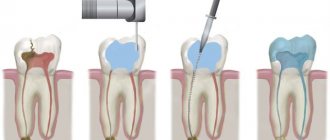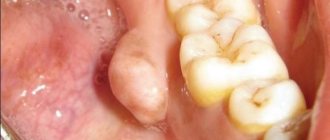- Like any sinusitis, sphenoiditis can be acute or chronic.
- A typical symptom of sphenoiditis is headache, most often not localized in the occipital region, orbit, crown, temples.
- The diagnosis is made only after a clinical examination.
- Various methods are available to treat sphenoiditis, but endoscopic surgery (sphenotomy) is preferred.
The acute form of any sinusitis, including sphenoiditis (sphenoid sinusitis), usually occurs as a result of respiratory infections.
The paranasal sinuses are involved in almost every rhinitis or runny nose. In 5-10% of cases, bacterial sphenoiditis also occurs. Sign up for a consultation
What is acute sphenoiditis?
Paranasal sinuses are air-filled structures in the skull that are connected by narrow passages to the nasal cavity.
These include the maxillary, emoidal, frontal and sphenoidal sinuses. They are much less likely to become inflamed than, for example, the maxillary (maxillary) sinus. However, sphenoiditis is quite susceptible to the chronic course of the disease. In the paranasal sinuses, secretions and mucus are formed, which normally flow through the anastomosis into the nasal cavity. However, if these passages become clogged with swelling of the mucous membrane from a cold or other reasons, then the outflow of discharge is disrupted. There is then a risk of bacterial or viral infection accumulating in the sinuses.
In 90% of cases, sphenoiditis is viral (flu, acute respiratory infections, etc.) and only as the disease continues does bacteria join this process (bacterial superinfection).
Nasal rinsing
Now let's try to figure it out - are there situations in which rinsing the nose turns out to be not only useless, but also certainly harmful?
Let's start, perhaps, with the fact that during any rinsing, what is first removed from the nose is what is necessarily there - nasal secretion, that is, mucus, or snot for complete simplicity.
What is snot and why does the body need it?
The secretion of the mucous membrane contains a number of nonspecific and specific protective factors that contribute to the neutralization and removal of microorganisms. The first include glycoproteins, lysozyme, lactoferrin, complement, protease inhibitors, secretory glucosidases, interferon. Specific factors are represented by immunoglobulins, which act as protection against microorganisms.
Thanks to the activity of these and other factors, viruses, toxins are neutralized, and bacteria are lysed.
The production of secretions by the mucous membrane is one of the main protective mechanisms of the respiratory tract. The volume of nasal secretion in healthy people ranges from 100 ml to 1-2 l/day. About 3/4 of the liquid part of the nasal secretion is spent on humidifying the inhaled air, the rest is necessary to ensure mucociliary transport.
Under certain conditions, blood cells can be found in nasal secretions. Normally, they do not appear in nasal secretions. The presence of certain cells indicates a pathological state of the body.
Most often, neutrophils can be found in the secretion. They penetrate the mucus when bacteria actively multiply in the nasal cavity. Neutrophils are protector cells. They absorb microbes and die themselves, releasing a green pigment that determines the color of nasal discharge.
In case of allergies and hypersensitivity, eosinophils are released into the mucus. Their presence can be detected by taking a regular nasal swab. Eosinophils confirm the allergic nature of the disease.
So, blood cells (eosinophils, neutrophils and red blood cells, basophils) are sometimes found in nasal secretions. This indicates a pathological condition of the nasal mucosa. Normally, mucus is a cell-free and sterile matrix that does not contain bacteria or viruses.
When capillaries are damaged, red blood cells are released into the secretion. They color it red, orange or brown. Normally, these cells are absent.
During illness, increased snot formation from a physiological factor becomes pathological.
The first cause of a runny nose (rhinorrhea)
Rhinorrhea (from the Greek “rhoia” - flow, discharge) is a term meaning copious mucous (watery) discharge from the nasal cavity.
Medical encyclopedia
Viruses cause the death of ciliated epithelial cells, their number is significantly reduced.
Under the influence of pathogens, mucin changes its structure, making mucus more viscous.
It is difficult for the remnants of the ciliated epithelium to move large layers of viscous secretion; it stagnates in the nose and is colonized by microorganisms.
This means that by starting to rinse the nose at the first signs of a “cold,” as our patients like to call a viral infection, by washing away the mucus, they deprive the mucous membrane of the nasal cavity of natural specific protection and open the way for viruses (and bacteria, to be honest) to their places of reproduction - epithelial cells. And they get prolonged rhinosinusitis with complications.











